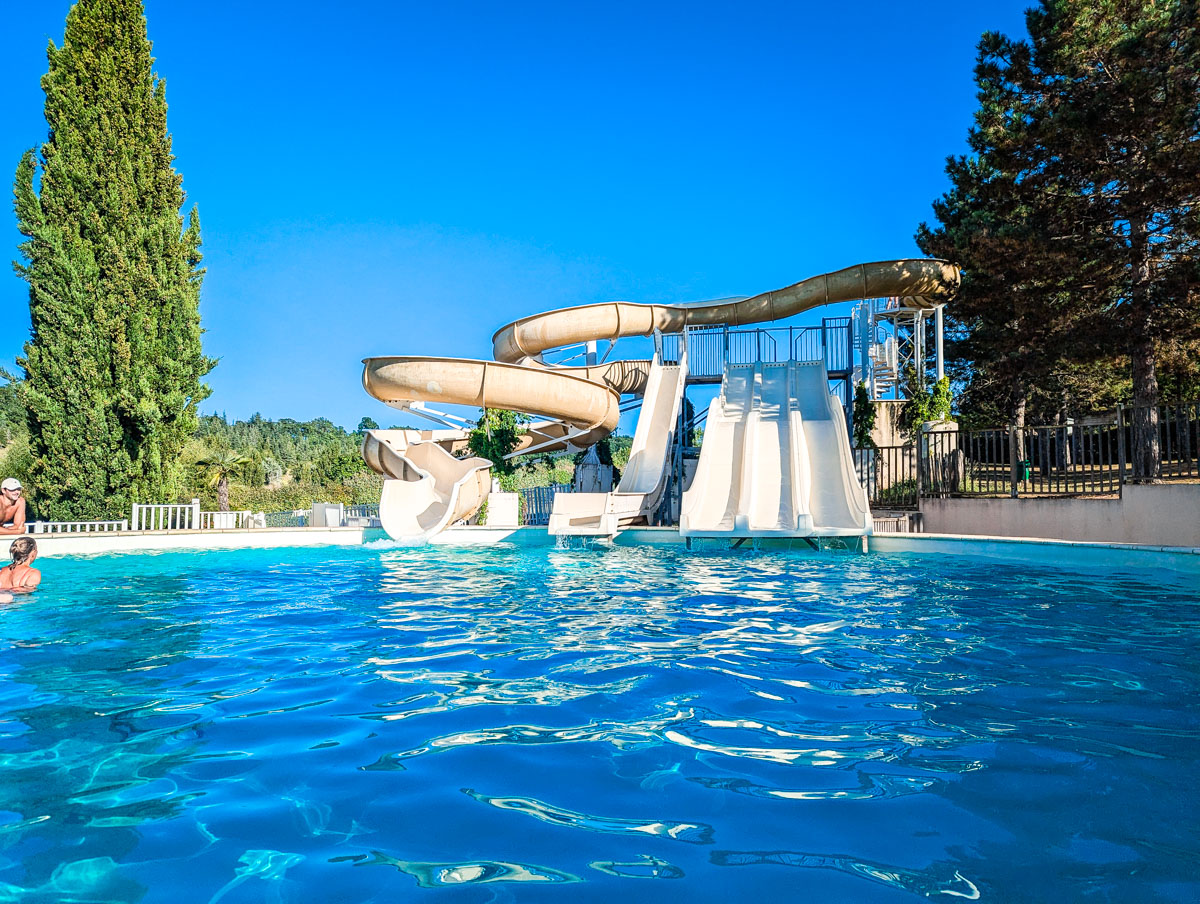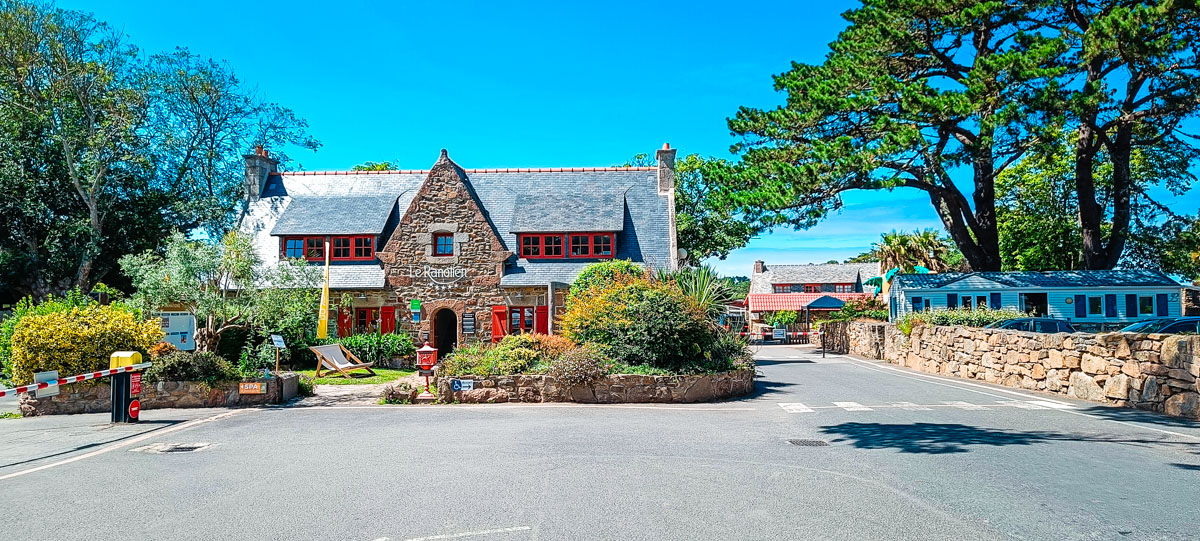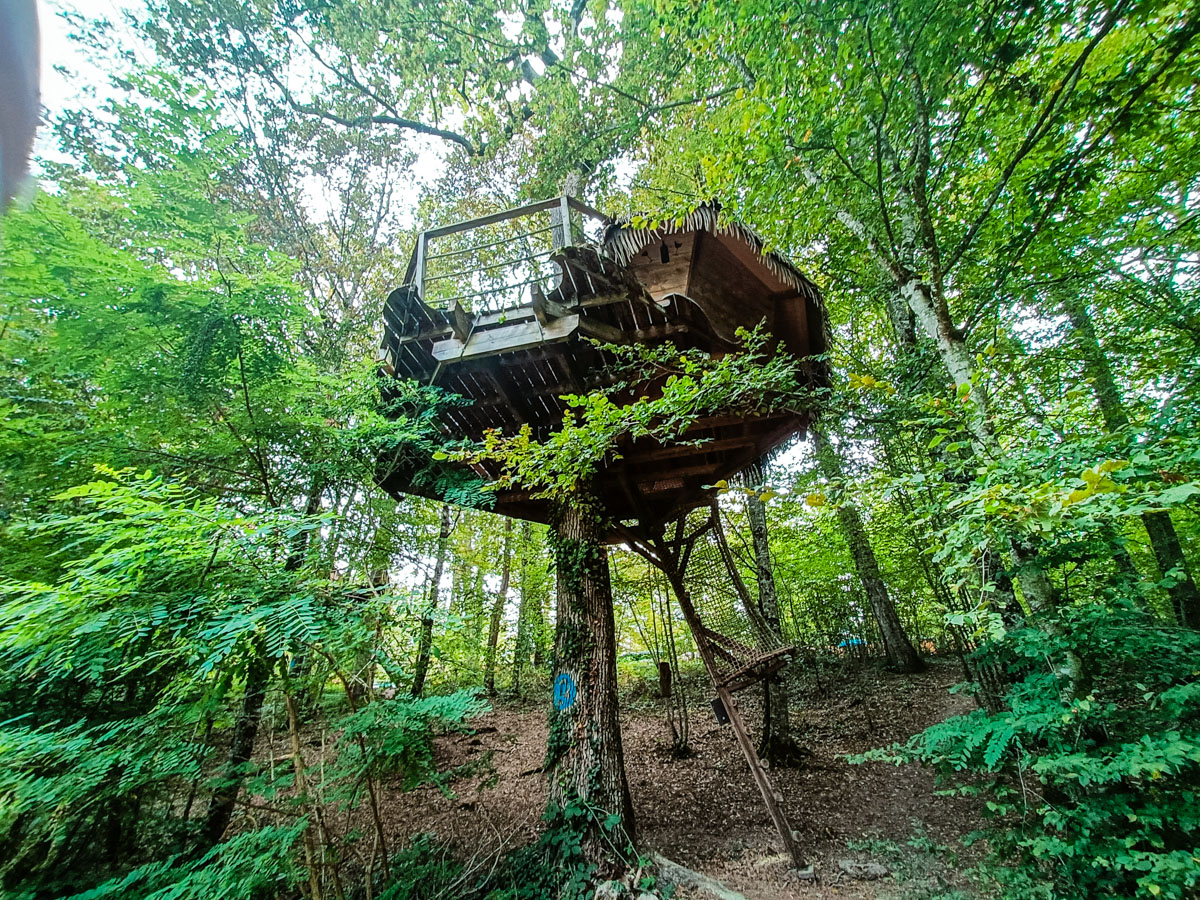Driving abroad for the first time can be a scary prospect, but I’m here to help you prepare and tell you it’s really not as scary as you’ve built up in your head. As someone who has been driving left-hand and right-hand cars in mainland Europe since 2014, I have quite a bit of experience when it comes to the do’s and don’ts. So, first things first, let’s start with the essentials.
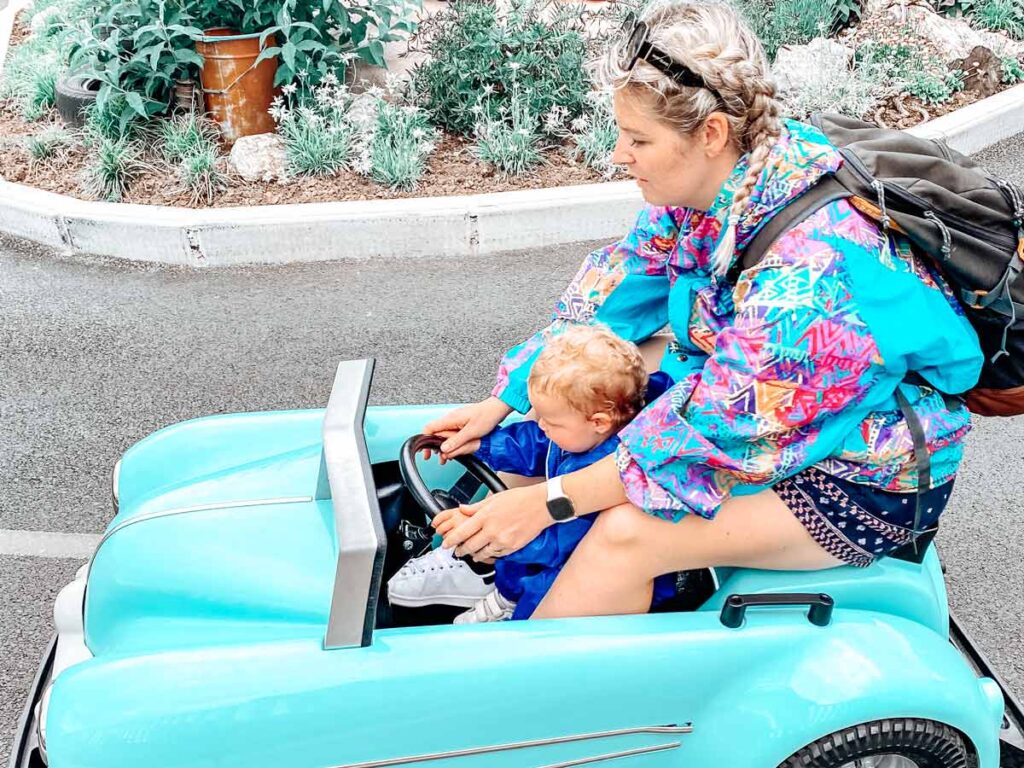
Essential Tips For Driving In Europe
Whenever we stay with Eurocamp holidays or on our own camping pitch, we always drive. It enables us to pack what we want and get there at our pace, but there are a few things we always have to remember.
What side of the road to drive on:
The first thing to consider is that you’ll be driving on the right. If you hire a left-hand-drive car, you’ll be using the opposite hand to control the gear stick and looking on your right to look in the rear view mirror. Everything else stays the same. If you are driving your right-hand-drive vehicle, you’ll be driving on the ditch side of the road. Your perception may be slightly skewed, so using your mirrors is highly recommended.
Paperwork
Before you even consider bringing your own car, double-check that your car insurance covers you for travel to/in your chosen countries and what level of insurance you are covered for. Make sure you have your V5C (or rental agreement if renting), driving license, passport, and insurance documents all to hand.
If you are coming from the UK, you’ll have to make sure your number plate shows the UK at the beginning with a flag, and if not, you’ll have to add a UK sticker.
Finally, make sure your maps are loaded on Google or your satnav and back them up offline with paper copies, too.
These are the essentials, but let’s look deeper into literally EVERYTHING you should know.
Essential Documents For Travelling Through Europe

Before planning a trip, ensure you have all these documents in date, legal, and on hand.
Driving license: A full and valid license is necessary. UK licence holders will not need an international driver’s permit for most EU countries that allow them to stay for less than 90 days. However, an IDP may be required if you hold a paper licence or one from Gibraltar, Guernsey, Jersey or the Isle of Man. Non-EU licence holders (e.g., USA, Australia) may need an IDP. Check each destination’s rules.
Insurance Green Card: This is no longer necessary for most UK and EU drivers, but your insurers may recommend that you carry one. It shows proof of your insurance in case of checks or accidents.
Vehicle registration documents: Remember to pack your logbook if you are driving your own vehicle. You’ll need to prove your vehicle ownership if you get pulled over for any reason.
Rental Agreement: If you don’t own the car, you must show the rental agreement to ensure your vehicle is legally allowed to cross borders.
Passport: Many countries recommend that it be valid for the entire trip, with a minimum validity of 6 months. Your validity is counted as 10 years (or 5 years for children) from the issue date. You no longer count the additional months. You basically have 9 years and 6 months from the issue date.
MOT & Tax Documentation: Your car needs to be road-legal to drive abroad. Carrying an MOT certificate is particularly useful for older vehicles, as it is more likely to be checked with them.
Breakdown coverage and travel insurance: Essential for travellers. You won’t believe the hassle you’ll have if you break down without cover. For your own peace of mind, I 100% recommend getting good breakdown cover and travel insurance. These things can save you massively in the long run.
Additional for Caravan or Campervan Drivers:
- Proof of caravan insurance, if separate from your main vehicle.
- Towing entitlement on your licence (check category B+E or C1 for heavier setups).
- Weight limits, plate certification or manufacturer’s plate for caravan or trailer.
- Permission documents if towing a borrowed caravan.
For even more advice on essential paperwork, check the RAC Travel checklist
Speed Limits Across Europe for cars, Motorhomes and towing
Speed limits will vary based on what vehicle you drive and how much load you carry. Motorhomes, towing and heavy vehicles are subject to much lower limits than standard cars, especially on the motorways. Ensure you always check local signs, but as standard, these are the rules for some of the most visited European countries.
| Country | Motorway (Cars) | Motorway (Motorhomes <3.5t) | Motorway (Motorhomes >3.5t / Caravans) | Rural Roads | Urban Areas | Notes |
| France | 130 km/h | 110 km/h | 90 km/h | 80 km/h | 50 km/h | Wet weather reduces limits; trailers restricted |
| Spain | 120 km/h | 100 km/h | 90 km/h | 80–90 km/h | 50 km/h | 30 km/h zones common in towns |
| Netherlands | 130 km/h (evening) / 100 km/h (day) | 100 km/h (max) | 80–90 km/h depending on setup | 80 km/h | 50 km/h | Speed camera enforcement is strict |
| Italy | 130 km/h | 100 km/h | 80 km/h | 70–90 km/h | 50 km/h | Lower limits apply in rain or fog; trailers restricted on some roads |
Some countries, like France, impose lower limits on rainy days; this will generally be signposted on your route.
Country-Specific Driving Laws You Need to Know
Every country has different rules and regulations, so it’s essential to familiarise yourself with the countries you are travelling through. Here are some of the rules for the most popular European camping countries.

France:
- You need to be 18 to drive and hold a valid license
- Priorite a Droit: This old rule still exists in some areas. You have priority if you see a white sign with a yellow triangle. If you see the same sign with a cross through it or a red triangle sign with a cross, you do not have priority, and cars can pull out from the right. Some drivers still believe this rule exists, so keep your eyes peeled for vehicles on your right and pre-empt any dangerous actions they may take.
- Horns should only be used during daylight hours and only to warn drivers.
- The blood alcohol limit is 0.05%
- Everyone must wear a seatbelt. The driver is responsible for checking that all passengers are strapped in.
- A driving kit including a warning triangle and hi-vis for every passenger is essential.
- It is illegal to use devices that show where speed cameras are. These functions need to be removed from maps and sat navs.
For a full breakdown of rules visit: Le Shuttle
Driving In Italy
- Drivers must be 18+
- Headlights must be on while driving outside of urban areas. Car headlights are required by law even during daylight hours.
- The maximum blood alcohol level is 0.5%. For drivers under the age of 21 or with less than 3 years of experience, the permitted level is 0.00%
- Reflective vests and warning triangles are required safety equipment for cars.
- Cars must maintain a minimum of 1.5-meters when overtaking bicycles.
More information on Italy driving rules here: Italy Tourist board
The Netherlands
- Cyclists often have the right of way, even when not following rules. Exercise caution around them
- The blood alcohol limit is 0.05%, with a lower limit of 0.02% for new drivers under 2
- Children under 1.35m must use an approved child seat
More details for The Netherlands here: Sixt Driving Advice
Driving in Spain
- Motorcyclists must use lights at all times
- Radar detectors are prohibited
- You must carry a spare pair of glasses for drivers who require them
You can find more information here
These laws can be strictly enforced and result in on-the-spot fines. Always review current legal requirements before travelling.
Toll Roads and Emission zones for campers
Most European countries will have toll roads and low-emission zones. Planning these into your trip budget can be very helpful, especially as motorhomes generally carry a higher charge. Here’s how some of the most popular European countries work
France
- Most motorways are tolled, and prices change based on distance travelled and vehicle category. You can buy a toll tag so you don’t have to stop at every gate.
- LEZ’s are in effect across most major cities. You will require a Crit Air Sticker on your car. These are cheap, easy to apply for, and will save you from getting a nasty fine.
Italy
- The autostrada network is extensive, and nearly all routes are toll roads. Payment can be made by cash or card, but I would have all modes of payment available for emergencies.
- Limited Traffic Zones (ZTL) exist in cities and urban areas, meaning only vehicles with local permits can travel into them. If you are caught in one, you will be fined automatically via camera.
Spain
- Many toll roads were removed in recent years, but a few remain.
- Low emission zones started in Spain in 2023. Cities with over 50,000 inhabitants are now required to implement LEZ
Netherlands
- The Netherlands does not have national motorway tolls, but some tunnels and bridges (e.g., the Western Scheldt Tunnel) do require a toll
We always check our routes on ViaMichelin in advance to grasp the cost of tolls.
Safety Gear And Legal Equipment Checklist
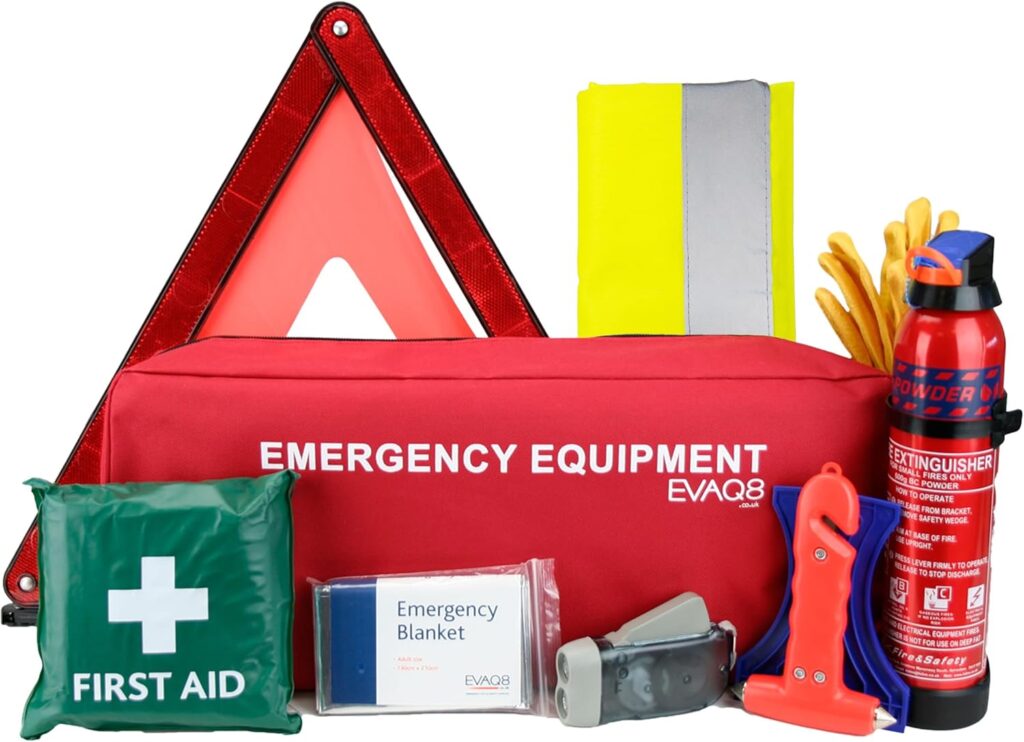
Being safely prepared is one of the most important things about travelling in Europe, and many of the local laws require you to carry mandatory safety equipment. It’s advisable to buy yourself a comprehensive European Driving Kit with the necessary equipment, but if you want to grab stuff off your back, here’s what you’ll need and why.
- Every passenger must wear a high-visibility jacket. If you are involved in an accident or breakdown, you must wear these when exiting the car. They must also be within reach of the driver.
- Warning Triangles. These must also be within reach of drivers and placed outside the car to warn other drivers of a stopped vehicle.
- Headlamp Beam Deflectors are required when driving a UK vehicle on the right-hand side of the road to prevent dazzling other drivers.
- Spare Bulb Kit: This is required or recommended in many countries. You must be able to replace faulty bulbs on the spot.
- First Aid Kit: These are mandatory in Austria and Germany but are recommended everywhere.
- Snow chains or all-season tyres are legally required for certain regions during the winter months. You’ll notice on many French road signs the dates you can enter with and without them.
- Fire Extinguishers – these are necessary in some Eastern European countries but recommended everywhere
- Spare pair of glasses: If you require glasses for driving, you will need a spare pair in France and Spain
- Towing mirror: This is mandatory in France and Italy if you tow a caravan larger than your towing vehicle.
It’s important to remember that these are the rules at the time I have written this but things can often change. Make sure you check the official sites like the AA for more information on current requirements
Camping-Specific Rules on Overnight Parking and Aires
Parking overnight is a hot topic for campervan drivers who are travelling for long distances at a time. There are some pretty strict rules and regulations around this, which vary from country to country. Here’s what you need to know
France
- Wild camping is generally prohibited
- Aires (not the motorway ones) are available in most towns and villages and offer motorhomes a place to stop with minimal facilities.
- Do not sleep on motorway Aires. These are a hot spot for criminals.
Spain
- Wild camping is Illegal
- Look for Autocaravanas areas; these will have marked bays and waste facilities.
Italy
- Wild camping is illegal
- Use official Aree di sosta or campsites. Some supermarkets and petrol stations also allow overnight stays.
Netherlands
- Wild Camping Is Prohibited
- Overnight stays are only allowed at official camperplaatsen or motorhome parking areas.
Tips for Legal Overnight stays
- Use trusted apps like Campercontact and Park4night to find legal parking/camping areas
- Avoid setting up awnings, chairs and tables
- Leave no trace. Keep things clean and tidy; don’t ruin it for other campers
- Things will book up fast in the summer, so arrive early to Aires.
Driving Etiquette and Cultural Differences
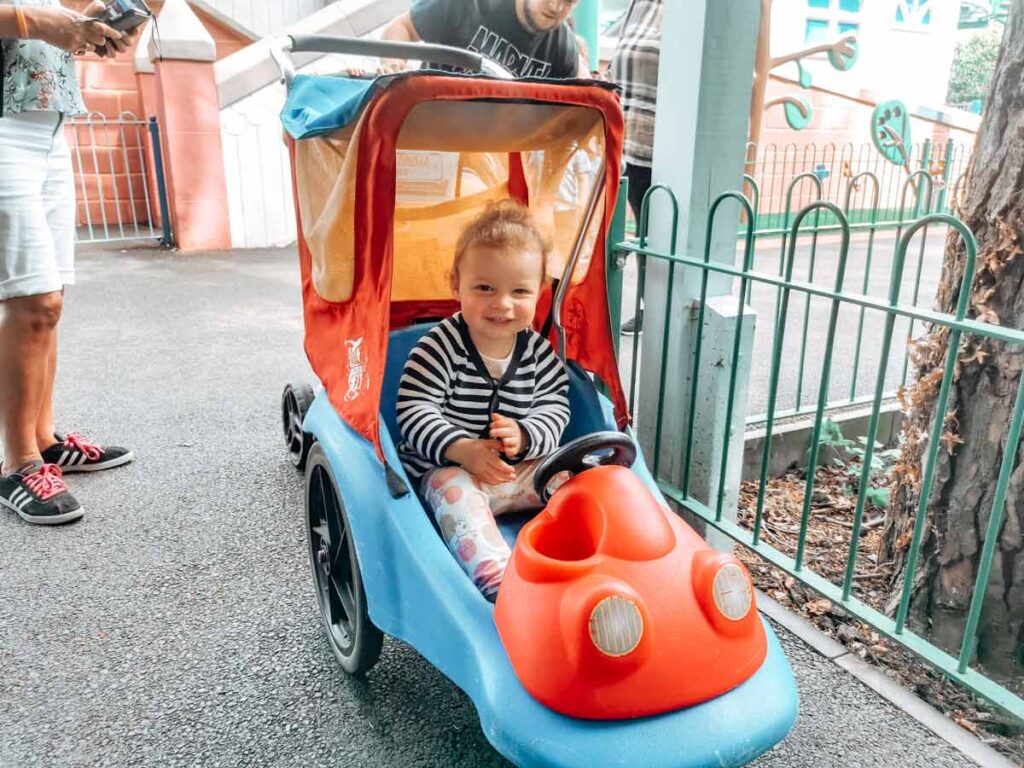
You’ve probably heard that driving in France and Italy can be crazy. We’ve all seen videos of the Arc de Triomphe roundabout, right? But if you know the etiquette, it doesn’t have to be that nerve-wracking.
France
- Roundabouts are a fast affair, with drivers pulling on and off aggressively. You may need to be heavy on your breaks.
- Flashing headlights can mean different things. Sometimes, they’re a signal that a driver wants you to give way, not necessarily that they’re letting you in.
- Don’t expect drivers to indicate they should, but often don’t.
Spain
- There are lots of one-way roads around cities and large towns, which local drivers will drive incredibly fast on
- Anticipate unexpected lane changes without indicator use. Have your wits about you.
Italy
- Expect sudden manoeuvres, aggressive overtaking, and last-minute lane changes.
- Horns are commonly used to express frustration and signal intention.
- Mopeds and scooters weave through traffic —check mirrors constantly.
The Netherlands
- Cyclists have strong legal priority
- Roundabout rules can vary by region—some give priority to entering traffic, others to circulating traffic (this will be signposted)
- Be prepared for multi-use lanes shared with bikes, buses, and trams.
General Advice
- In most European Countries, the left lane is for overtaking only
- You should always use indicators and avoid aggressive driving
- Learn the basic road signs for the countries you are travelling through
- Be extra cautious in rural areas where people use the roads to their own rules.
Common fines and penalties
Many European countries enforce on-the-spot fines, and just because you don’t have cash on you doesn’t mean you’ll get away with it. Police officers have been known to frog march drivers to the local cashpoint to settle their fines. Here are the most common reasons this might happen to you.
Speeding
- You’ll find speed cameras, mobile units and average speed check zones in many countries
- Fines will vary across the board but are known to be steep in Italy, France and The Netherlands
- You may get your vehicle and license confiscated if you are significantly over the limit.
Alcohol Limits
- Random breath tests are very common
- Limits vary; new drivers face stricter limits
- Convictions include large fines, points, driving bans, etc
On-the-Spot Fines:
Police can issue immediate fines for offences such as:
- Missing safety equipment (e.g., warning triangle, hi-vis vest)
- Not wearing seatbelts
- Illegally entering restricted zones (e.g., ZTLs in Italy)
- Incorrect parking or overnight camping in prohibited areas
Improper Use of Lights or Phones:
- Using a mobile phone while driving is illegal across pretty much all of Europe.
- In some countries, not using headlights correctly can result in fines.
Tip: Always carry cash and cards, and make sure your legal documents are within easy reach. Don’t try to argue with the police, as fines will be worse for non-compliance.
Final Checklist:
Before you go, double check you’ve thought of everything and tick them off this list:
🚘 Vehicle & Driving Documents
✔ Valid driving licence (check if you need an IDP)
✔ Passport with sufficient validity (min. 6 months recommended)
✔ Vehicle registration document (V5C) or rental agreement
✔ Proof of insurance
✔ MOT and tax documentation
⚠️ Safety & Legal Equipment
✔ High-visibility vests (one per passenger, stored in reach)
✔ Warning triangle
✔ Headlamp beam deflectors (for UK vehicles)
✔ Spare bulb kit
✔ First aid kit
✔ Snow chains or winter tyres (seasonal/country-specific)
✔ Fire extinguisher (mandatory in some countries)
✔ Spare tyre or puncture kit
✔ Spare pair of glasses (if required to drive)
✔ Towing mirrors (if towing a caravan wider than your vehicle)
🛣️ Trip Planning & Navigation
✔ Check toll routes and consider electronic tags
✔ Research and apply for required LEZ/ZTL stickers (e.g., Crit’Air, Umweltplakette)
✔ Plan fuel stops and avoid expensive motorway stations
✔ Download or carry a paper map as a backup
✔ Pre-load GPS or sat nav with offline maps
🏕️ Camping & Overnight Stops
✔ Research camping laws for each country
✔ Bookmark trusted apps: CamperContact, Park4Night, Searchforsites
✔ Confirm where overnight parking is allowed (especially in cities)
✔ Prepare cash & card for camper stops & tolls
📞 Emergency & Communication
✔ European emergency number: 112
✔ Save roadside assistance numbers (from your insurer or breakdown cover)
✔ Have international roaming or a local SIM card for navigation & calls
✔ Carry a charger, power bank, and printed emergency contacts
🧾 Extras & Admin
✔ Copies of all important documents (digital + printed)
✔ Insurance details for personal health/travel
✔ Basic language cheat sheet for traffic signs and emergencies
✔ bin bags, wet wipes, and toilet paper for rest stops
Are You Ready To Drive in Europe?
Whether you’re planning a long road trip or a quick jolly across the channel, I hope this guide has answered some of your questions and informed you of some of the things to consider.
Last tips:
- Double, Triple, Quadruple check the rules for the country you are visiting
- Keep your documents close/safe and take some extra copies just incase
- Download your offline maps on google and print some extras incase of technology failures
- Enjoy Your trip!

